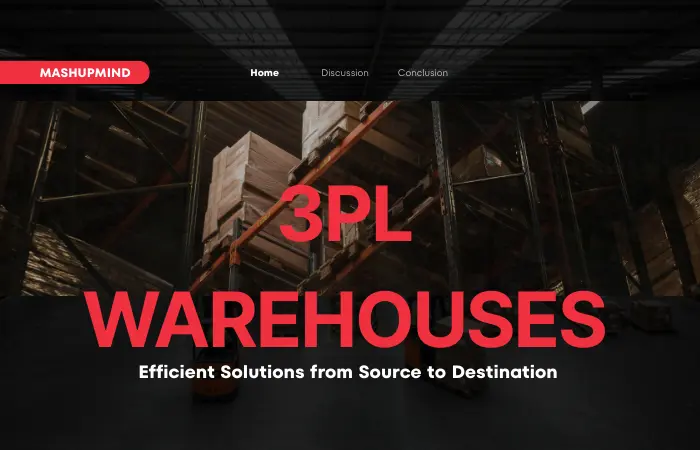Running a growing business means juggling a hundred different things at once. Marketing needs attention, product development demands focus, and customer service requires constant care. And then there’s the warehouse situation, the part that quietly eats up time, money, and mental energy while everyone pretends it’s under control.
Here’s the thing: most businesses hit a point where their current storage and shipping setup just stops working. Maybe orders are backing up during busy seasons, or the “warehouse” (that back room or rented space) is bursting at the seams. The shipping process that worked fine for 50 orders a week completely falls apart at 200. This is where things get interesting, because professional third-party logistics warehouses handle these exact problems every single day.
The Technology Gap That Most Companies Can’t Bridge
Walk into a modern warehouse facility, and the first thing that stands out is the technology. Not just a computer running spreadsheets, we’re talking warehouse management systems that track every single item from the moment it arrives until it ships out. Barcode scanners, RFID tracking, automated inventory counts, and real-time stock level updates.
Building this kind of system from scratch costs serious money. The software alone can run tens of thousands of dollars, and that’s before factoring in the hardware, training, and ongoing maintenance. Small to mid-sized businesses simply can’t justify that kind of investment when they’re focused on growing their core product or service.
But specialized logistics providers already have these systems up and running. They’ve spent years refining their processes and investing in technology because it’s literally their entire business model. When a company partners with a 3PL warehouse, it instantly gets access to sophisticated tracking and management tools without the upfront investment or learning curve.
The practical difference shows up in ways that directly affect customers. Real-time inventory visibility means accurate stock counts on websites. Automated order processing means faster fulfillment. Integration with shipping carriers means customers get tracking numbers within hours instead of days.
Space Flexibility That Traditional Leases Can’t Match
Commercial real estate commitments are rigid and expensive. Sign a warehouse lease, and you’re locked in—#, usually for years. Need more space during the holiday rush? Too bad. Have empty space in January when things slow down? Still paying for it.
Professional logistics warehouses operate on a completely different model. Storage needs can expand or contract based on actual inventory levels. A business selling outdoor furniture might need triple the space in spring compared to winter. Seasonal beverage companies face similar swings. Traditional warehouse leases penalize this kind of variability, but flexible warehousing arrangements accommodate it.
The financial impact goes beyond just rent. Consider everything that comes with warehouse space: utilities, insurance, property taxes, maintenance, and security systems. These costs add up quickly, and they don’t scale down when business slows. With professional warehousing services, these expenses become variable costs tied to actual usage rather than fixed overhead that drains resources year-round.
The Labor Problem Nobody Wants to Talk About
Finding, training, and keeping good warehouse workers is harder than it sounds. The work is physical, the hours can be irregular, and turnover rates in warehouse jobs tend to run high. For a business focused on making or selling products, suddenly becoming an HR department for warehouse staff is a massive distraction.
Professional facilities already have trained teams in place. They know how to handle fragile items, pack boxes efficiently, process returns correctly, and manage the physical demands of the job. When someone calls in sick or quits, it’s not the client’s problem to solve; the warehouse has backup staff and established hiring processes.
This stability matters more during peak periods. A company experiencing sudden growth or seasonal spikes needs more hands on deck immediately. Hiring temporary workers, training them quickly, and managing the expanded workforce takes time and expertise. Logistics providers handle these fluctuations constantly, so they’ve got systems for ramping up and down efficiently.
Equipment and Infrastructure That Doesn’t Make Sense to Own
Forklifts cost between $15,000 and $50,000 each. Pallet jacks, conveyor systems, loading dock equipment, packaging stations, the list goes on. Then there’s maintenance, repairs, and eventual replacement. For businesses that aren’t in the logistics industry, these are massive capital expenses that tie up money better spent elsewhere.
Professional warehouses spread these costs across multiple clients. They maintain equipment properly because it’s essential to their operation. They upgrade systems regularly because efficiency directly impacts their bottom line. Client companies benefit from professional-grade infrastructure without the capital outlay or maintenance headaches.
The same logic applies to the building itself. Loading docks, climate control systems, fire suppression, security cameras, proper lighting, these aren’t cheap additions to any space. Warehouses built specifically for logistics already have everything in place and up to code.
Shipping Discounts That Volume Makes Possible
Shipping costs can make or break thin profit margins. A company shipping 100 packages a week pays retail rates to carriers. But facilities processing thousands of packages daily negotiate volume discounts that individual businesses can’t access on their own.
These savings add up fast. Even a few dollars per package makes a meaningful difference when multiplied across hundreds or thousands of shipments. Some businesses find that shipping savings alone offset a significant portion of warehousing costs.
The relationships matter too. Professional logistics operations have established connections with multiple carriers, which means flexibility when problems arise. Holiday shipping delays? They’ve got backup options. Unusual shipment requirements? They know who can handle it.
The Expertise Factor That Experience Builds
Running a warehouse efficiently requires knowledge that comes from doing it repeatedly. How should products be organized for fastest picking? What’s the most efficient packing process? How do you handle returns without creating chaos? When should you cycle count inventory?
These might seem like small operational details, but they determine whether a fulfillment operation runs smoothly or constantly creates problems. Logistics professionals have seen every scenario and solved most issues multiple times. They know what works because they’ve already tested it.
This experience prevents expensive mistakes. Improper storage damages products. Inefficient picking processes slow everything down. Poor packing leads to shipping damage and returns. Companies learning these lessons the hard way pay tuition in lost inventory, angry customers, and wasted time.
What This Actually Means for Growing Businesses
The pattern is pretty clear. Businesses reach a point where their DIY logistics approach stops working, but building professional infrastructure in-house doesn’t make financial sense. The gap between these two options is where specialized warehousing services live.
It’s not about giving up control; it’s about recognizing what activities actually drive business value. A beverage company should focus on developing great drinks, not becoming experts in warehouse management systems. A furniture maker should concentrate on craftsmanship, not navigating commercial real estate leases.
Professional logistics partnerships let businesses stay focused on what they do best while ensuring that storage, fulfillment, and shipping happen reliably in the background. The infrastructure, technology, expertise, and flexibility are already there, ready to scale up or down as needed.
Most businesses can’t replicate this setup cost-effectively on their own. But they don’t have to, that’s the whole point.







